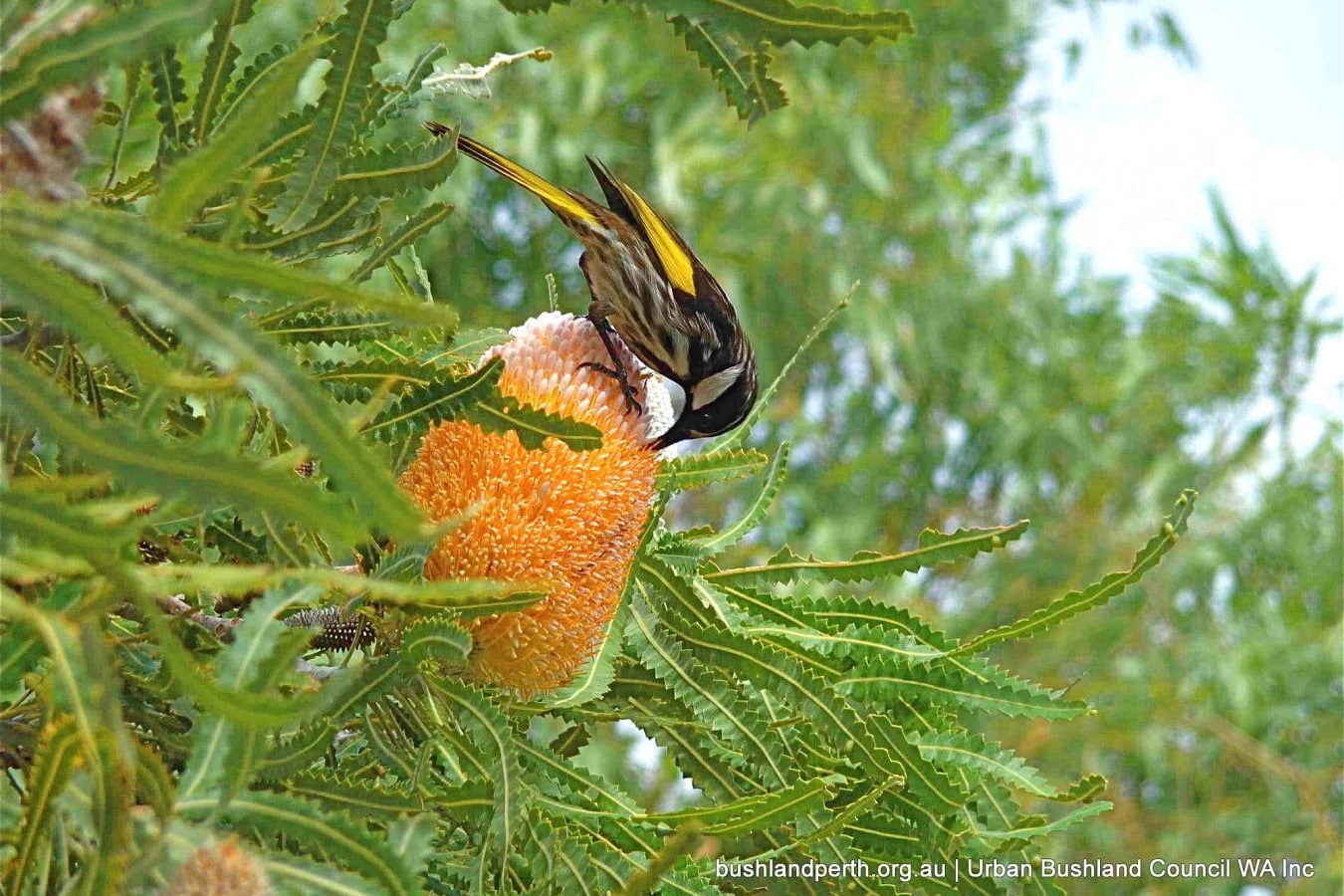Supporting the following Objectives
A World for Woodlands
Reducing threats to Banksia Woodland Threatened Ecological Communities through land stewardship

Long Term Goal
By 2050 the condition of the nine EPBC listed threatened ecological communities in the Peel-Harvey Region is maintained or improved
Regional Land Partnerships (Australian Government) Outcomes
Primary Outcome:
By 2023, the implementation of priority actions is leading to an improvement in the condition of EPBC Act listed Threatened Ecological Communities
- Primary Asset: Banksia Woodlands of the Swan Coastal Plain
- Secondary Asset: Clay Pans of the Swan Coastal Plain
Banksia Woodlands of the Swan Coastal Plain are located within one of the two global biodiversity hotspots found in Australia.
Listed as a Threatened Ecological Community, the remaining 20,000 ha of Banksia Woodlands are spread over 5,000 sites in the Peel‑Harvey Catchment and provide critical corridors, habitat and food for fauna.
Clearing of Banksia Woodland has led to fragmentation and, coupled with invasive weeds, feral animals and the spread of disease, ecological processes have been diminished.
Our 5 year project will work with community and land managers to develop guiding actions to help meet Conservation Advice objectives. Actions aimed at maintaining or improving extent and condition of Banksia Woodlands and associated TEC’s will include:
- Increasing skills & knowledge of land managers through awareness-raising and training events
- Mapping the extent and condition of Banksia Woodland remnants
- Revegetation and access control to improve connectivity
- Reducing threats such as feral animals and disease
- Monitoring to demonstrate improved extent and condition
For more detail on the project, please view the project summary here
Banksia Woodlands…important feeding grounds
The long, overlapping flowering seasons of the Banksia tree species, with help from an array of understorey plants, ensures the Woodlands support numerous nectar-feeding birds such as the New Holland Honey-eater. After flowering, seeds of Banksia and other species provide valuable food sources for the endangered Carnaby’s Black Cockatoos and Forest Red-tailed Cockatoos.

Carnaby's Black Cockatoo
Calyptorhynchus latirostris
Photo: Keith Lightbody

New Holland Honeyeater
Phylidonyris novaehollandiae
Photo: Marg Owen

Honey Possum
Tarsipes rostratus
Photo: Bush Heritage Australia Annette Ruzicka
Key Threats
- Predation by feral cats and foxes
- Habitat fragmentation and loss
- Disturbance
- Inappropriate fire regimes
- Disease
- Loss of cultural knowledge and values
- Climate Change
- Decline in pollinating and seed dispersing fauna
- Loss of keystone Banksia species and fragmenting of nectar/pollen nutritional networks
- Lack of data by which project outcomes can be measured
Management Actions
Biophysical
- Initiatives to revegetate buffers and linkages
- Regeneration, revegetation and restoration
- Feral Animal Control
- Fencing of natural areas
- Disease management
- Weed control
Non Biophysical
- Establish partnerships and engage Aboriginal (Noongar) representatives/groups to plan, deliver and preview projects
- Sites where cultural values are identified and protected
- Land managers implementing improved fire and/or grazing regimes
- Land managers fencing remnant populations
- Voluntary management agreements for protection
- Increased awareness through promotional activities
- Land managers adopting Land for Wildlife assessments and actions
- Field days and workshops
- Education programs for schools

Working Together
The PHCC is delivering the A World for Woodlands – Banksia project in collaboration with the following:
- Department of Biodiversity, Conservation and Attractions (DBCA)
- Birdlife Australia (WA)
- Local Governments
- Local Noongar Community
- Tertiary institutions (including Murdoch University)
- Expert consultants
- Farmers and land managers
Project outcomes
Changes in Asset (by 2023)
920 ha of Banksia Woodlands and associated TEC’s will be protected, managed and/or restored through management of threats, restoration and reduced access as per recommendations of the Conservation Advice and interim Recovery Plan
At least 4 sites of Clay Pans of the Swan Coastal Plain TEC within the Peel-Harvey Catchment associated with Banksia Woodlands project sites have undertaken management actions to maintain or improve condition
Practice and Attitude Change (by 2023)
Over 180 land managers and community have an improved understanding of principles and practices for restoration and conservation of Banksia Woodlands and associated TEC’s as a result of 28 awareness and skill building events
20 landholders will be involved in the management to protect or restore Banksia Woodlands
Our Noongar community is activity participating in the delivery of the management of Banksia Woodlands on the Swan Coastal Plain through 12 on-ground, consultation and training events
Monitoring and Evaluation
An effective monitoring and evaluation framework is being used to ensure the Project delivers on its outcomes.
Our PHCC project logic provided the framework for the design, delivery, review and evaluation of this project. An adaptive management approach is being used to monitor, evaluate, review and improve the methods of delivering project services to meet the Banksia Woodlands Conservation Advice.
Short and medium term outcomes have been developed and will contribute to the long term outcomes leading to an improvement in the condition of EPBC Act listed Threatened Ecological Communities of the Banksia Woodlands of the Swan Coastal Plain (Primary Investment Priority) and the Clay Pans of the Swan Coastal Plain (Secondary Investment Priority)
Management Actions (outputs) are detailed on the graph below, with progress in delivery up to June 30, 2021 showing that we are on target to meet our targets, as defined in our Agreement with the Australian Government.

